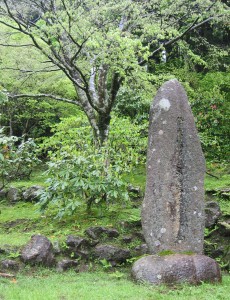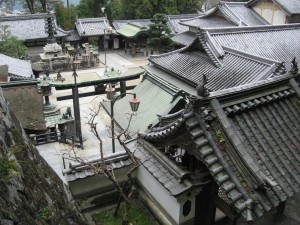What is the Best Way to Learn Japanese Grammar?
One Answer: Use a Good Textbook.
If you are thinking about the best ways to learn Japanese, one of the first things you will need is a good basic textbook. Although I have used a number of sources while working on these audio lessons, the primary book that I was studying when I began to create them was Professor Susumu Nagara’s Japanese for Everyone. This is an excellent text which teaches Japanese grammar and vocabulary in a thorough, systematic way. It is also quite difficult.
Note: this book has recently (early 2025) become somewhat expensive (more than $66), apparently because the publisher has stopped printing new copies. The last time that this happened, in 2008, the publisher eventually started printing a slightly revised version, and the price went back to about $20 again. I hope that the same thing will happen again.
What is the Best Way to Learn Japanese Vocabulary?
One Answer: Get a good Dictionary.
You should purchase one or more Japanese-English dictionaries to use for reference during your studies. I’ve found the Japanese-English Dictionary by Seigo Nakao to be perhaps the most useful for everyday use. There are also some excellent Japanese dictionary apps. The one I use most often on the iPhone and iPad is Japanese, by Taku Kudo, sold by renzo Inc.
If you want to write in Japanese, you should be aware that the rules for doing so are rather confusing. Many Japanese people seem to have their own personal rules for deciding whether certain words should be written in kanji, hiragana, a combination of the two, or in katakana. Most dictionaries do not bother to explain how words are commonly spelled in everyday Japanese writing. Instead, they simply provide the kanji, however obscure, for every word. I have found Samuel E. Martin’s Concise Japanese Dictionary to be a very useful resource, since it clearly shows how words are usually spelled by Japanese people.
When you are using a Japanese dictionary, please be aware of some hints about spelling in romaji, listed at the bottom of this page.
What is Best Way to Learn Japanese Speech Patterns?
One Answer: Download and Use these Audio Lessons.
I suggest that you download these free lessons and find an mp3 player that will allow you to listen to them while you are on the go. In addition, if you intend to use the lessons while walking, I recommend that you get a clicker, i.e., a remote control for your mp3 player. A remote control will allow you to pause and resume the lessons with the touch of a button in your hand.
Based on my personal experience, you should plan to repeat each lesson in this Japanese course about five times before proceeding to the next one. After you complete new lessons, you may want to go back and review previous lessons, before going on to the next one.
What is the Best Way to Learn Japanese Words?
One Answer: Develop and Use Mnemonics.
A mnemonic is a small story that helps one to remember a new word or phrase. For example, the first mnemonic that you will encounter in the transcript for this Japanese course, near the beginning of Lesson 1, is for the word kankou, meaning “sightseeing.” The mnemonic is “I went sightseeing to see canned corn.” This mnemonic may or may not work for you. If it doesn’t work, please feel free to ignore it or change it.
I know people who seem to have a photographic memory and who probably don’t need to use memory aides. If you are one of those people, you won’t need to worry about mnemonics.
 However, if you are a person with an average memory, you may find mnemonics useful. In the transcripts for these lessons, I haven’t been able to include all of the mnemonics I’ve developed over the years, since a mnemonic is only a temporary crutch, and one tends to forget it after a Japanese word has been learned.
However, if you are a person with an average memory, you may find mnemonics useful. In the transcripts for these lessons, I haven’t been able to include all of the mnemonics I’ve developed over the years, since a mnemonic is only a temporary crutch, and one tends to forget it after a Japanese word has been learned.
My own mnemonics are naturally specific to my own background and experiences. Some of them are in English, some in Spanish (a language that I learned at an early age), and some in Japanese. Some are related to specific experiences or to specific people that I’ve known in my life. It’s only natural that mnemonics that work for me may not work for you. I encourage you to delete or ignore my mnemonics when you find them unhelpful and to create your own.
The best way to learn Japanese vocabulary is to create your own mnemonics. You may want to use an English dictionary to find words that are pronounced in the same way that Japanese words are pronounced. In the example above, if you were trying to find a mnemonic for the word kankou, meaning “sightseeing,” you might look for words starting with “kanko” or “canco.” If that didn’t work, you might then look for words starting with “kan” or “can” and words starting with “ko” or “co.” The best mnemonic that I was able to invent for kankou was “I went sightseeing to see canned corn,” but you might be able to think of something better.
It may take time to find the right mnemonic for the occasion. Of course, it’s better not to spend too much time on mnemonics. They don’t have to be perfect.
If you are using Microsoft Word, you can search the transcript of this Japanese audio course for particular words in English or Japanese, to try to get help with understanding or remembering a new term, or to help you find an old term that you want to check again. Push the Ctrl and F keys, type the word you’re looking for in the space provided, and click on “Find Next” repeatedly to find all of the places in the transcript where the word is used. You may sometimes be able to locate a mnemonic that appears elsewhere in the text by using this technique.
The transcript of this Japanese course is provided in a form that I’ve found useful for printing and carrying with me. You may modify it as you wish, by adding your own mnemonics, for example.
What is the Best Way to Learn Japanese Listening?
Answer: Work on 聞き取り (kikitori).

Kikitoru is a compound Japanese verb, derived from kiku (‘listen’) and toru (‘take’). Kikitori is the noun form of this verb, which can be translated as ‘listen/taking.’ In order to feel comfortable when you visit Japan, at some point you will want to start working on kikitori, or listening skills, in addition to your other studies. One way to work on kikitori is to listen to our Japanese-only review lessons, available on the Lesson Download page.
Another way to learn Japanese while enjoying yourself and improving your kikitori is to watch Japanese TV shows and movies in Japanese, with English subtitles. There are many Japanese movies and TV shows available on internet streaming sites, such as Netflix and YouTube.
Some Hints about Spelling in Romaji
As we continue the discussion of the best way to learn Japanese, please be aware that some dictionaries and other reference books use the convention of spelling romaji versions of Japanese words that contain a long o sound by using oo or ō, regardless of how they are spelled in hiragana. Our approach is a little different: in the transcript of our lessons and in our Learn to Read in Japanese books, we spell the romaji equivalents of words with a long o sound by using either ou or oo, depending on how they are written in hiragana. For example, 土曜日 (Saturday) is spelled どようび in hiragana, and we spell it ‘doyoubi.’ On the other hand, 大きいい (big) is spelled おおきい in hiragana, and we spell it ‘ookii.’
In somewhat the same way, when we encounter long o‘s in katakana words, we spell their romaji equivalents using oo, omitting the dashes that are used in the katakana alphabet. For example, we use “pasupooto” to spell パスポート (passport) in romaji. We don’t claim that our spelling method is more correct than other methods, but we think that you should be aware of the different spellings that you may encounter for the long o sound.
Notes about tsu and zu: if you are using a computer word processor or dictionary, sometimes you must type tu when you mean tsu, or du when you mean zu. For example, the word 手続き tetsuzuki (procedure) must be typed ‘tetuduki,’ if you want to look it up in an electronic dictionary or if you want it to be converted into Japanese text by your computer. Similary, 続く tsuzuku, an intransitive verb meaning ‘to continue or go on,’ has to be spelled ‘tuduku’ in order to be recognized by an electronic dictionary or be converted to Japanese text by a computer.
When you want to type a lower-case tsu, you must hold down x on the computer keyboard and then type tu. For example, to spell 出張 shutchou (business trip) on a computer keyboard, first type shu; then hold down x, type tu and release x; and finally type chou.
Note about ji: ji can be written either as a derivative of the character し shi or as a derivative of the letter ち chi. In other words, it can be written as じ or as ぢ. When you want to type ぢ, type ‘di.’ For example, in order to spell the word 縮む chijimu (to shrink) on a keyboard, you must type ‘chidimu.’
Note about ‘n: sometimes you will see romaji words written with ‘n in the middle. For example, 原因 gen’in means ’cause, origin or source.’ The purpose of the apostrophe is to indicate that this word is pronounced ‘gen in,’ not ‘ge nin.’ To look this word up in an electronic dictionary, you need to type ‘gennin.’ On the other hand, to type it on a computer and have it converted to Japanese text, you may type either ‘gen’in’ or ‘gennin.’
In the same way, for the words 残念 zan’nen (regrettable) or 天然 ten’nen (natural,) you must type ‘zannnen’ or ‘tennnen’ in an electronic dictionary. On a computer keyboard, you may type ‘zan’nen’ or ‘zannnen,’ or ‘ten’nen’ or ‘tennnen.’
Next, read about our Equipment Suggestions